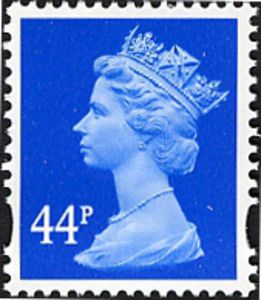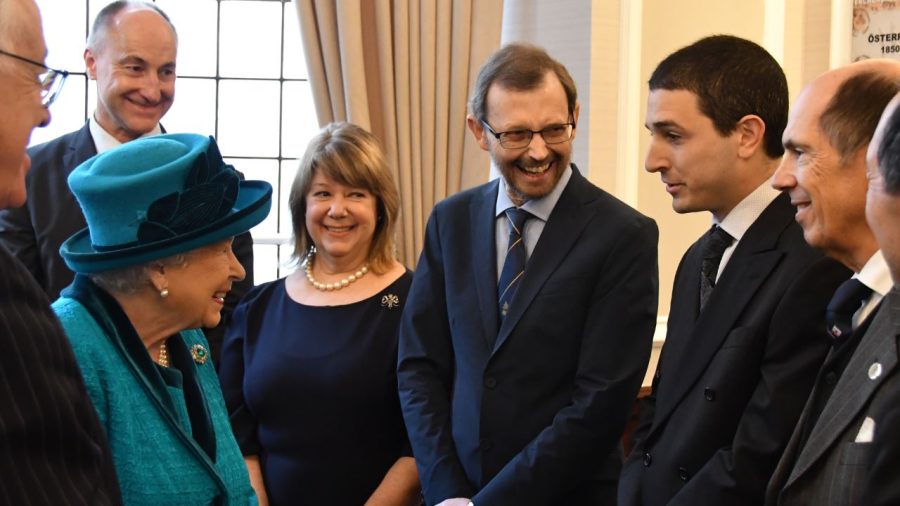How collecting stamps led Chesterfield’s Alexander Haimann to a meeting with Queen Elizabeth
Published September 18, 2022
My reflections in the wake of the passing of Queen Elizabeth II certainly will not match the grief of millions who lived for 70 years with her as their Queen. But I’d like to share three connections that I had with Her Majesty as I continue to grapple with my own sorrow surrounding her passing.
My first connection is the moment that I became aware of the Queen as a major international figure. I had just started collecting postage stamps at the age of 7 when I learned that Great Britain, starting in 1840, did not put its country’s name on its stamps. Instead, a representative image of the reigning monarch was all that was required.
That first stamp issued in May 1840 prominently featured the defining British monarch of the 19th century, Queen Victoria, poised in black ink. It cost one penny.
Ever since that first stamp famously known as the “Penny Black,” the monarch has been the primary subject of every British postage stamp or is represented by a profile silhouette in the corner of the stamp’s design. As a result, stamps with Queen Elizabeth II’s head either in silhouette or fully featured began entering my childhood collection.

These were not only stamps of Great Britain since many other countries have the Queen as its head of state as well. So, within a short period of time, I had stamps from Canada, Australia, the Bahamas, Jamaica, the Solomon Islands, and other stamp-issuing countries with the Queen featured in some form.
My second connection is the moment I realized that Queen Elizabeth II was not only a global stateswoman, but also a major figure of history.
Twenty-two years after my stamp collecting journey had begun, in 2015, I found myself in Scotland on a work trip a month before my first child was due to be born. At the train station in Edinburgh, a TV crew was interviewing people waiting for their trains. I overheard the reporter asking an interviewee what he thought about Queen Elizabeth II passing her great-great grandmother, Queen Victoria (of Penny Black stamp fame) as the longest reigning monarch in British history?
I had about a minute to think of what I would say if asked the same question when the reporter put a microphone in front of my face and asked the same question. Judging from his reaction, the reporter clearly didn’t expect to hear an American accent.
I remarked that Victoria’s reign from 1837 to 1901 (I have a thing for dates) was remarkable; she influenced the history of that period in ways that are hard to comprehend. Queen Elizabeth II has also reigned over a tremendous period of change in Britain and the world. Pretty amazing, I continued, for her to have regularly met with every prime minister starting with Winston Churchill and to have met every U.S. president from Truman to Obama except for Johnson.
My connection to the Queen grew a bit deeper when I was elected a Fellow of the Royal Philatelic Society London the following month. Since 1906, the Society has had each reigning British monarch as its patron. The Queen had visited the Society’s London premises in 1969 for the 100th anniversary of the organization’s founding. For an American who loved history and its many connections to the present day, I felt as close as I thought I would ever get to such an important historical figure.
A few years after that moment in 2015, I became aware of the fact that Anne Frank had a postcard of then-Princess Elizabeth pasted on her wall in the family’s hidden annex. Anne also wrote about Princess Elizabeth in her famous diary. On April 21, 1944, just a few months before the family’s arrest, Anne wrote:
Today is the eighteenth birthday of Her Royal Highness Princess Elizabeth of York. The BBC reported that she hasn’t yet been declared of age, though royal children usually are. We’ve been wondering which prince they’ll marry this beauty off to, but can’t think of a suitable candidate.
In June 2015, Queen Elizabeth II visited the Bergen-Belsen concentration camp where Anne Frank had died. Even today, I’m struck by how the Queen (then-Princess) was one of the last living people that Anne wrote about and had connected to in her own way during a life cut short by the Holocaust.
My third connection with Queen Elizabeth II is from Nov. 26, 2019 — the day I met her as a person. That September, I had been invited by the President of the Royal Philatelic Society to attend the official opening of its new headquarters building.
A few weeks before the day, each attendee received a memo about required dress, protocol for the day and instructions for a rehearsal before the official opening.
When we arrived for the rehearsal, it was confirmed that Queen Elizabeth II was coming the following day. We received instructions on how to interact with her regarding protocol. In summary — follow her lead. If she extends her hand, extend yours. If she starts talking to you, engage her in conversation. Most important, the first time addressing her, be sure to use “Your Majesty” and from then on “Ma’am.”
On the day of the opening, when she finally entered our room, it was surreal. The Society’s president guided the Queen to our group and indicated three of us were from the United States and began introducing us. Each time someone was introduced to the Queen she extended her hand, so we extended ours to hers. When she shook my hand, I said, “Your Majesty” and slightly bowed my head. She then made a comment about how the membership was clearly quite international in its scope.
When I mentioned that “there are over 300 members of the Royal Philatelic Society in the United States,” she seemed somewhat surprised.
“Well you now all have a beautiful new headquarters building to come to when visiting London,” she said. I responded very enthusiastically with “absolutely, ma’am!”
Over the course of an hour, she chatted with approximately 40 people, walked unassisted around three floors of the new building and don’t forget — she was 93 years old at the time. A remarkable experience I will remember and cherish for the rest of my life.
Alexander Haimann is a proud St. Louis transplant who lives with his wife, Sarah and their three children in Chesterfield. They belong to Congregation B’nai Amoona. In his work life, Haimann is a partner at Less Annoying CRM, a 2014 Arch Grant recipient company















